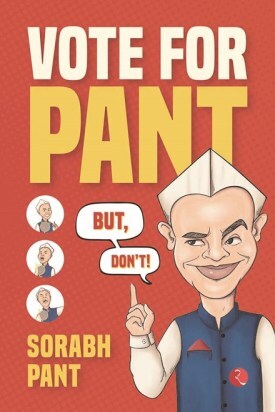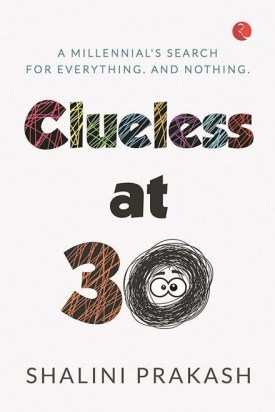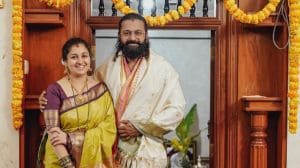Subah ke 4 baj gaye, lekin yeh dimaag hai ki sochna band hi nahi kar raha hai. Khud ke baare mein sochna, kisi jagah ke baare mein sochna, kuch hone wala hai ya kuch beet gaya ho toh uske baare mein sochna…
“Hindi is the language of the masses as it communicates and connects with the reader instantly,” says author Anubhav Agrawal and the writer of the above excerpt from the book MindF**ked: When It’s 4 am and You Can’t Stop Thinking. In his untailored and simple approach to writing, he uses ‘Hinglish’ to translate people’s feelings on how overthinking and other problems are common today.
Also read: Pakistan receives US Dollar 1 billion from China
“It is a popular and simplified way of tackling people’s feelings. The style and tone click with readers during my storytelling sessions on social media. Thus, what I write or speak is what people feel, and this has become an accepted style to read or listen—a rather uncomplicated way to approach thoughts. The simplified use of language to explain the complexities of life in a casual manner is meant for those who haven’t read a single novel in life,” says Agrawal, who has more than 5 million followers across all social media platforms and has influenced millions through his ‘Let’s Talk Sessions’ and poetry on Instagram.

Clearly, casual, engaging and relatable style is becoming the new normal in social media experiences, books, posts, videos and podcasts that is transcending the conventional format of writing or expression.
Modern English is constantly evolving and adopting new words and phrases, and this is the reason why many hybrid variations like ‘Hinglish’ (Hindi+English) or ‘Tanglish’ (Tamil+ English) and ‘Singlish’ (Singaporean English) are gaining popularity, especially when it comes to content creation.
Using Hinglish and casual vocabulary also invokes a sense of nostalgia and relatability which connects the audience. “This is why not just authors but even businesses and marketers like using Hinglish and casual vocabulary while creating marketing content,” says Sharmin Ali, CEO and co-founder of Instoried, an augmented writing platform that improves customer interest and engagement.
Many people live away from families for their work and education. “These casual short videos from their favourite creators make them feel like having a friend they are talking to, someone who can put their thoughts into words without making it heavy and keeping it relatable,” feels Aanchal Agrawal, an entrepreneur and stand-up comedian.
Agrawal’s videos in ‘Indori’ vocabulary and dialect connect with the audience as she uses words like ‘Baapda’, which means ‘Bechara’, or ‘tatpunjiye’, ‘aeble’, ‘chankat’, etc. “People message me saying, ‘whenever we miss home, we watch your videos’. I think that is a connection that the casualness in the language has formed,” she says.
Resonating well
Kalpana Mohan, author of An English Made in India: How a Foreign Language Became Local published by Aleph Book Company, finds many of her readers comment on how real and accessible her writing is. “People assume that something has to be complicated in order to impress or touch people. The opposite is often true. For an idea to be understood, it must be said simply and directly. The popularity of podcasts emphasises this point,” she says.

Mohan, who believes in energy and candour in all communication, writes like she speaks and always ensures to employ humour. A little drama goes a long way too. “My content does not involve words or expressions from Hinglish. That said, I do not hesitate to use a new word in any language provided I explain it upon first using it,” she adds.
Shalini Prakash, author of Clueless At 30: A Milennial’s Search for Everything and Nothing, feels that today’s generation has a short attention span. They want something quick and relatable. The ease of reading informal language makes it flow well and a light read. “There is a certain casualness and quirky content that the youth seek. So, being honest and authentic in writing is important,” she says.
In good humour
The most exciting part about being bilingual is finding the comedic sounds in words in two languages. Agrees comedian-author Sorabh Pant, known for his comedy specials such as My Baby Thinks I’m Funny (2016) and Make India Great Again (2018). “As a comedian, you are constantly trying to talk onstage like how you talk offstage, with exaggerations of course. Also, I occasionally pepper my act with words that just sound inherently funny. I recently discovered the word ‘juncture’ is funny to say, if said right, and the term ‘thal-thal’ is a current favourite. The second one was inspired by a comedian Siddhartha Shetty, though,” says Pant, who has added a joke in every paragraph to make it fun to read in his recently released book titled Vote for Pant, But Don’t.
Similarly, podcaster and YouTuber Ranveer Allahbadia, whose channel BeerBiceps has over 3.5 million followers, finds casual conversation or language is best done in humour. “It is how the world’s biggest podcaster Joe Rogan has grown. He talks about heavy scientific topics paired with jokes, humour and a level of friendliness and that is the reason why it’s becoming popular all over the world,” says Allahbadia, who uses conversational tropes like voice modulation to sound funnier.
What really works?
Resonating real-life situations while creating content and taking inspiration from real-life people, be it in Hinglish or other languages, always work, subject to audiences for whom the content is being made, feels Gurpreet Singh, co-founder and COO of One Digital Entertainment, a digital video and creator network managing over 15,000 creators and channel partners. “The use of lingos has more effect. Having said that, a formal style of communication has its own charm and is widely used basis the genres of the content and targeted audiences,” he says.
Sejal Kumar, a content creator with more than 2.5 million viewers on YouTube, tries to keep it natural and genuine. “I’m being myself in the videos; so, just talking to my audience as I would to a friend is very important. Hinglish is great for me as that’s how I speak at home.” On the other hand, Madan Gowri, a south Indian YouTuber, makes use of ‘Tanglish’ (Tamil+English), a new norm in the region, especially in Tamil Nadu. “We use English words a lot in our normal vocabulary these days,” he adds.
When it comes to mother tongue, most Indians process everything in that language and try to come up with an English translation of that.
“We think in one language and speak in another and because of this, there’s always a gap of words. If someone speaks Tamil, his or her Tamil will come out with English,” adds Raj Shamani, founder of podcast Figuring Out.









